The color of feces. Decoding Stool Colors: Understanding What Your Poop Color Means for Your Health
What do different poop colors indicate about your health. How can diet affect stool color. When should you be concerned about changes in your poop color. What medical conditions can cause abnormal stool colors.
The Rainbow of Stool Colors: What’s Normal and What’s Not
The color of your stool can provide valuable insights into your digestive health and overall well-being. While brown is the most common and typically healthy color for feces, variations in diet and certain medical conditions can lead to a spectrum of hues. Understanding what different stool colors mean can help you identify potential health issues and know when to seek medical attention.
What determines the color of stool?
The primary factor influencing stool color is bile, a yellowish-green fluid produced by the liver to aid in fat digestion. As bile pigments travel through the digestive system, they undergo chemical changes, resulting in the characteristic brown color of healthy stool. However, various factors can alter this process, leading to different colored stools.

Green Poop: Causes and Implications
Green stool is often harmless and can be attributed to dietary choices or rapid intestinal transit. However, in some cases, it may indicate an underlying health issue.
Common causes of green poop:
- Consumption of green vegetables (e.g., spinach, kale)
- Green food coloring in drinks or desserts
- Iron supplements
- Rapid intestinal transit (diarrhea)
Is green poop always a cause for concern? In most cases, green stool is not a reason to worry. However, if it persists or is accompanied by other symptoms like abdominal pain or fever, it’s advisable to consult a healthcare professional.
Yellow Stool: When to Be Concerned
Yellow stools can range from normal to potentially problematic, depending on their consistency and accompanying symptoms.
Possible reasons for yellow stool:
- Normal variation, especially in breastfed infants
- Celiac disease (intolerance to gluten)
- Malabsorption disorders
- Giardiasis (intestinal parasite infection)
When should you worry about yellow poop? If your stool is consistently yellow, greasy, and foul-smelling, it may indicate excess fat content due to malabsorption. This could be a sign of conditions like celiac disease or pancreatic insufficiency, warranting medical evaluation.

White, Pale, or Clay-Colored Stool: Potential Health Implications
Pale or clay-colored stools are often a cause for concern, as they may indicate a lack of bile in the stool due to liver or gallbladder issues.
Factors contributing to pale stools:
- Medications (e.g., bismuth subsalicylate)
- Barium sulfate (used in medical imaging)
- Liver diseases (e.g., hepatitis, cirrhosis)
- Gallbladder disorders
- Biliary obstruction
Why is pale stool concerning? The absence of brown coloration in stool may indicate that bile is not being properly produced, stored, or released into the digestive system. This can be a sign of serious liver or gallbladder problems that require prompt medical attention.
Black Stool: Distinguishing Between Benign and Serious Causes
Black stools can range from harmless dietary effects to potentially life-threatening conditions. It’s crucial to identify the underlying cause to determine the appropriate course of action.
Common causes of black stool:
- Dietary factors (e.g., black licorice, blueberries)
- Iron supplements
- Bismuth-containing medications
- Upper gastrointestinal bleeding
- Peptic ulcers
- Esophageal varices
How can you differentiate between benign and serious causes of black stool? If your black stool is tarry in consistency and has a strong, offensive odor, it may indicate the presence of digested blood from upper gastrointestinal bleeding. This requires immediate medical attention. On the other hand, black stools caused by dietary factors or certain medications are usually less concerning.

Red or Reddish Stool: Identifying the Source
Red or reddish stools can be alarming, but they’re not always a sign of a serious problem. The key is to determine whether the red coloration is due to dietary factors or blood in the stool.
Potential causes of red or reddish stool:
- Red-colored foods (e.g., beets, tomato soup)
- Food dyes
- Hemorrhoids
- Anal fissures
- Inflammatory bowel disease
- Colorectal cancer
How can you tell if red stool is caused by food or blood? If the red color is evenly distributed throughout the stool and you’ve recently consumed red-colored foods, it’s likely due to your diet. However, if you notice bright red streaks on the surface of the stool or toilet paper, it may indicate fresh blood from the lower digestive tract. In such cases, medical evaluation is recommended.
Orange Stool: Unusual but Not Always Worrisome
Orange stools are less common but can occur due to various factors, ranging from dietary choices to certain medical conditions.
Factors that can lead to orange stool:
- Beta carotene-rich foods (e.g., carrots, sweet potatoes)
- Medications (e.g., rifampin)
- Reduced bile output
- Certain digestive disorders
Should you be concerned about orange poop? In most cases, orange stools are not a cause for alarm, especially if they’re related to your diet. However, if orange stools persist or are accompanied by other symptoms like abdominal pain or weight loss, it’s advisable to consult a healthcare provider to rule out underlying digestive issues.

When to Seek Medical Help for Stool Color Changes
While many stool color changes are benign and temporary, certain situations warrant medical attention. It’s important to know when to consult a healthcare professional about changes in your stool color.
Signs that indicate you should seek medical help:
- Persistent changes in stool color lasting more than a few days
- Black, tarry stools not explained by diet or medications
- Bright red blood in the stool or on toilet paper
- Pale or clay-colored stools
- Changes in stool color accompanied by abdominal pain, fever, or unexplained weight loss
- Yellow, greasy, and foul-smelling stools
What tests might a doctor perform to investigate stool color changes? Depending on your symptoms and medical history, your healthcare provider may recommend various tests, including:
- Stool analysis
- Blood tests to check liver function and screen for anemia
- Imaging studies (e.g., ultrasound, CT scan) to examine the liver, gallbladder, and intestines
- Endoscopy or colonoscopy to visualize the digestive tract
By staying aware of your stool color and knowing when to seek medical attention, you can play an active role in maintaining your digestive health and overall well-being. Remember that while stool color can provide valuable clues about your health, it’s just one piece of the puzzle. Always consult with a healthcare professional for a comprehensive evaluation of your digestive health.
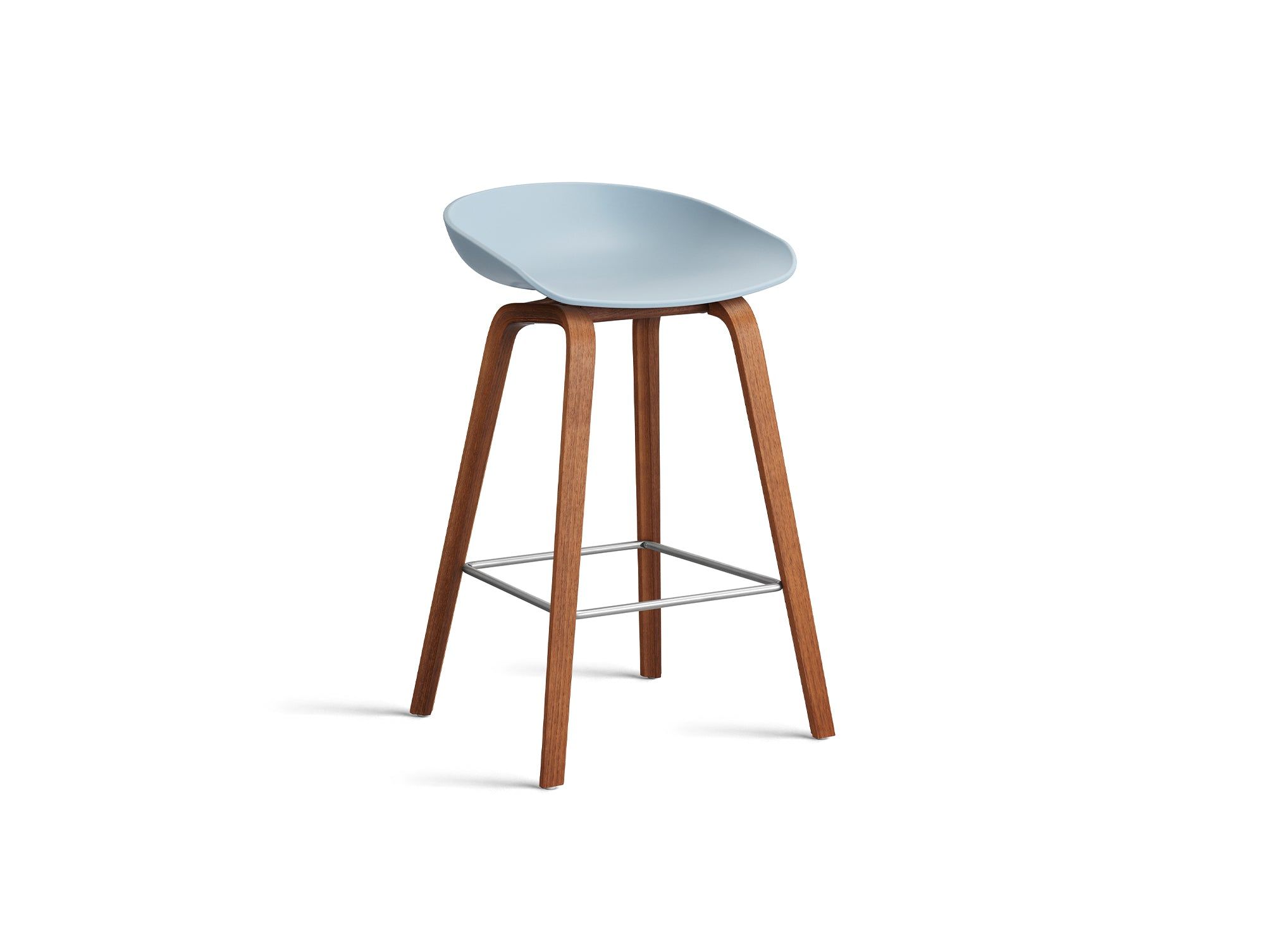
The Role of Diet in Stool Color Variations
Your diet plays a significant role in determining the color of your stool. Understanding how different foods can affect stool color can help you differentiate between harmless dietary effects and potentially concerning changes.
How do specific foods influence stool color?
- Green vegetables: Can lead to green stools due to their high chlorophyll content
- Beets: May cause red or reddish-purple stools
- Blueberries: Can result in dark blue or black stools
- Carrots and sweet potatoes: May lead to orange-tinged stools due to beta carotene
- Licorice: Can cause black stools, especially when consumed in large quantities
Can food dyes affect stool color? Yes, artificial food colorings found in candies, popsicles, and flavored drinks can sometimes pass through the digestive system relatively unchanged, resulting in brightly colored stools. This effect is particularly noticeable in children who consume large amounts of artificially colored foods.
The impact of medications and supplements on stool color:
- Iron supplements: Often cause dark green or black stools
- Bismuth subsalicylate (Pepto-Bismol): Can lead to black or dark stools
- Antibiotics: May alter gut bacteria and affect stool color
- Multivitamins: Can sometimes cause green stools
Understanding the relationship between diet and stool color can help you make informed decisions about when to be concerned about color changes. However, it’s important to remember that persistent or unexplained changes should always be evaluated by a healthcare professional.

Stool Color as a Window into Digestive Health
While stool color alone is not a definitive indicator of health, it can provide valuable insights into the functioning of your digestive system. By paying attention to changes in stool color and consistency, you can potentially catch early signs of digestive issues or other health problems.
What can stool color reveal about digestive health?
- Liver function: Pale or clay-colored stools may indicate liver problems or bile duct obstruction
- Pancreatic function: Greasy, yellow stools can suggest pancreatic insufficiency
- Intestinal transit time: Green stools may indicate rapid transit through the intestines
- Bleeding in the digestive tract: Black or red stools can signify bleeding at different points in the GI system
- Malabsorption issues: Pale, bulky, and foul-smelling stools may indicate problems with nutrient absorption
How often should you pay attention to your stool color? While it’s not necessary to scrutinize every bowel movement, being generally aware of your typical stool color and noting any persistent changes can help you stay informed about your digestive health. If you notice consistent changes lasting more than a few days or accompanied by other symptoms, it’s wise to consult a healthcare provider.
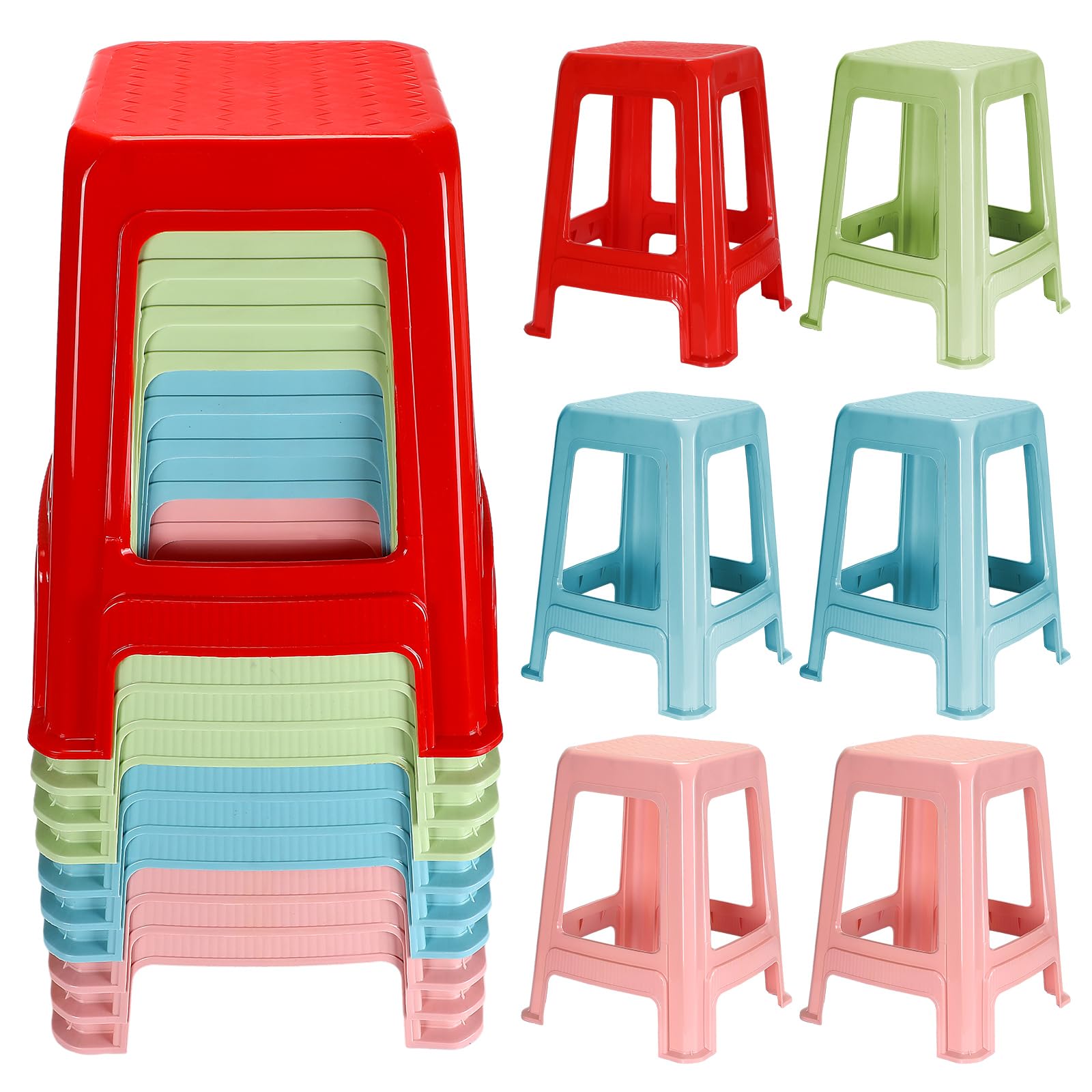
The importance of context in interpreting stool color:
It’s crucial to consider stool color changes in the context of your overall health, recent diet, and any medications or supplements you’re taking. A single instance of an unusual stool color is often not cause for alarm, especially if it can be attributed to something you’ve eaten. However, persistent changes or those accompanied by other symptoms warrant further investigation.
By being attentive to your stool color and understanding its potential implications, you can take a proactive approach to your digestive health. Remember that while stool color can provide valuable clues, it’s just one aspect of your overall health picture. Regular check-ups with your healthcare provider and open communication about any concerns are key to maintaining optimal digestive and overall health.
What Do Different Poop Colors Mean?
Written by Hope Cristol
- What Do Different Stool Colors Mean?
- Normal Poop Color
- Green Poop
- Yellow Poop
- White, Pale, or Clay-Colored Poop
- Black Poop
- Red or Reddish Poop
- Orange Poop
- When to Get Help for Poop Color Changes
- More
Different stool colors can mean different things, mostly depending on what you’ve eaten.
You’d probably notice if your poop is a different hue than normal. But what does it mean if it’s green? What about red, yellow, white, or black? Or orange?
Most of the time, minor changes in the color of your waste are due to diet. After all, we don’t eat the same thing at every meal, every day. But sometimes a color change can signal a minor health issue. In rare cases, it means something serious is wrong in your digestive system.
If the color you see before you flush worries you, call your doctor.
Poop is normally brown. The color is the result of what you eat and how much bile is in your stool.
The color is the result of what you eat and how much bile is in your stool.
Bile is a fluid your liver makes to digest fats. It starts out as a yellowish green color. But as the pigments that give bile its color travel through your digestive system, they go through chemical changes and turn brown.
Your poop can sometimes have a slightly greenish hue, or even be a more vivid green. Most of the time, green or greenish poop is normal.
Is your diet causing green poop?
Think back on what you’ve been eating. These foods and supplements can cause your poop to be green:
- Green veggies, like spinach or kale
- Green food coloring, such as in drink mixes or ice pops
- Iron supplements
Other causes of green poop
If you have green diarrhea, the color of your food may not be to blame. It’s likely that your meal moved through your gut too quickly, so the fat-digesting bile didn’t have time to turn brown.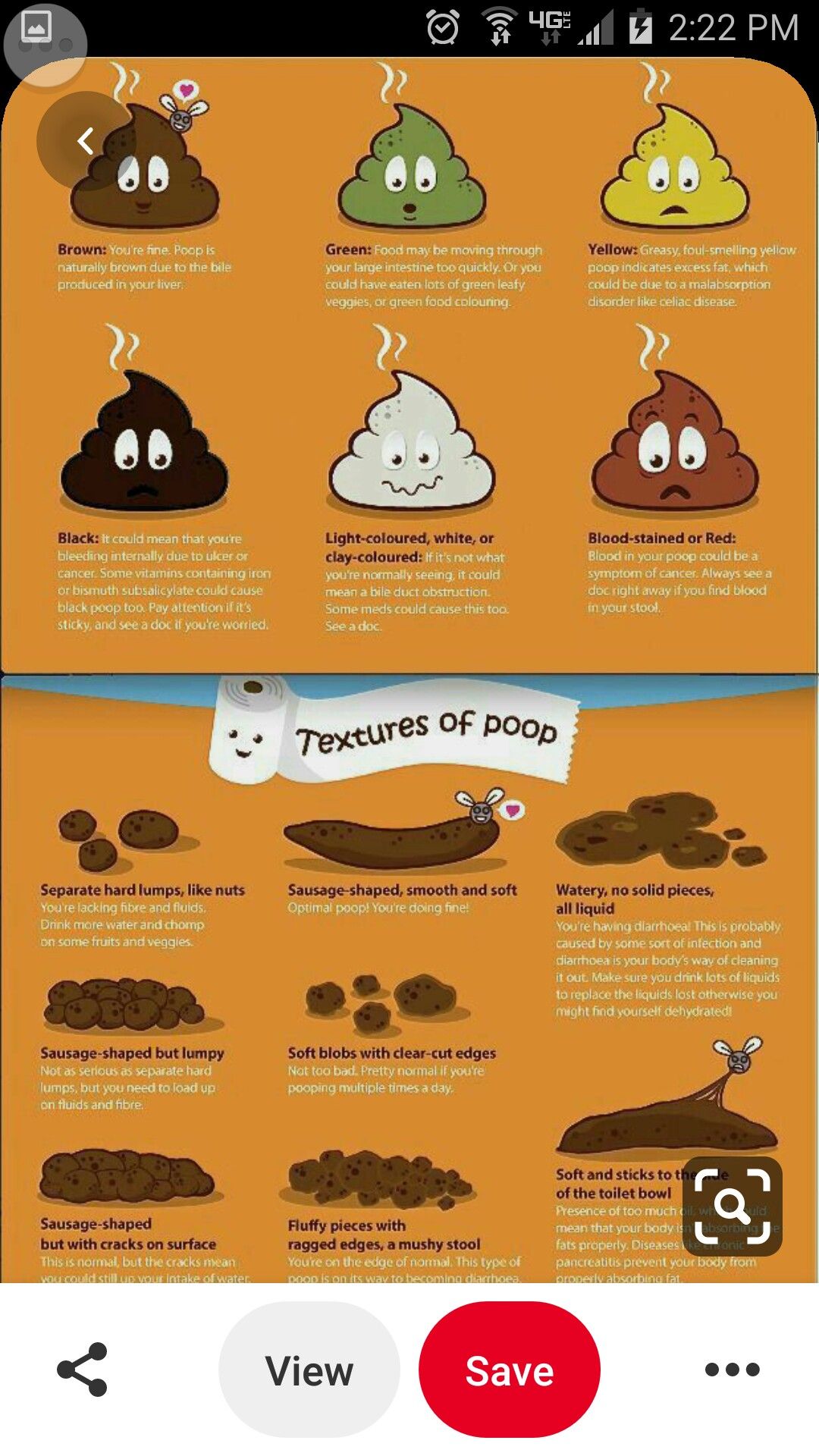
There may be times when your poop looks more yellow than brown.
This shade is also normal for many people. It’s common for babies, especially those who breastfeed. But if you have yellow poop that looks greasy and smells very bad, it may have too much fat. That could be a sign your body isn’t digesting food properly.
Is your diet causing yellow poop?
Indirectly, your diet could cause yellow poop. If you have celiac disease, your body can’t handle a protein called gluten, which is in wheat, barley, and rye. If you have the condition and eat foods that have gluten, like many breads, pastas, and cookies, your intestines won’t work as they should. So, if you’re eating those foods, and your poop is yellow, it may be time to see a doctor.
Other causes of yellow poop
There may be other causes of yellow poop that’s greasy and smelly. If it happens to you often, tell your doctor.
Sometimes, poop may not have much color at all.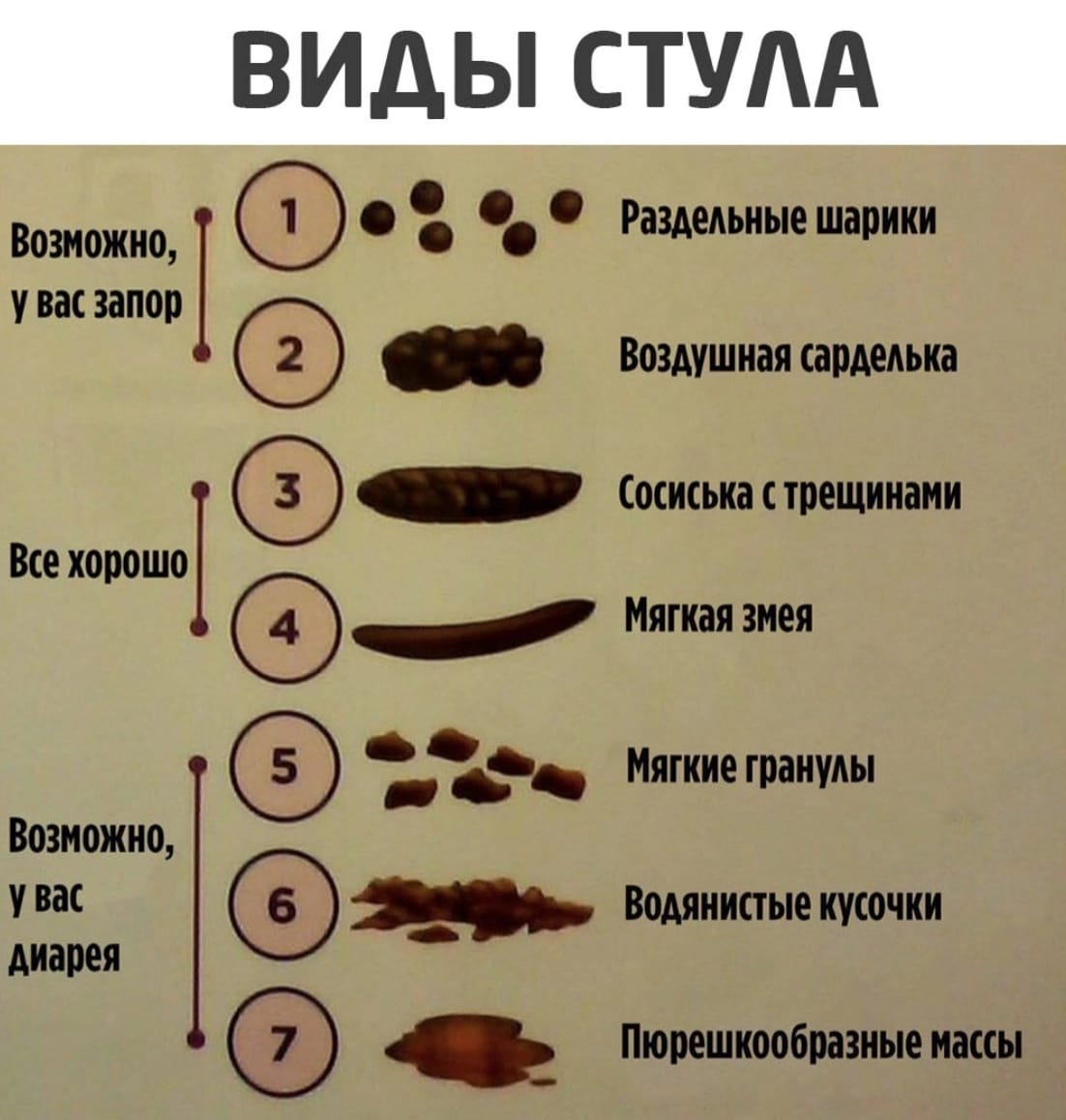
Is your diet causing pale poop?
If your poop is pale, it’s not likely directly due to a food. But medicines for diarrhea like bismuth subsalicylate (Kaopectate, Pepto-Bismol) can sometimes cause pale or clay-colored poop. So can barium, a chalky liquid you drink before you get X-rays of the upper part of your digestive tract.
Other causes of pale poop
A more serious cause is a lack of bile in your stool. (Remember, bile gives poop its brown color.) Your body makes bile in the liver, stores it in the gallbladder, and releases it into your small intestine to help digest your food. If there’s not enough of it to give your poop its typical brown color, it could be a sign of a problem along the way.
Liver disease, such as hepatitis, can keep bile from getting into your body waste. So can a blockage in the tubes (called ducts) that carry bile. This can happen because of:
- Gallstones
- A tumor
- A condition you’re born with called biliary atresia
Babies’ poop is black for the first few days after they’re born. Otherwise, it may be because you ate something very dark-colored or took a medicine or supplement that causes black poop. But this color can be a sign of a more serious problem: bleeding in the upper part of your digestive tract.
Otherwise, it may be because you ate something very dark-colored or took a medicine or supplement that causes black poop. But this color can be a sign of a more serious problem: bleeding in the upper part of your digestive tract.
Is your diet causing black poop?
Foods and supplements that turn poop black include:
- Black licorice
- Blueberries
- Iron supplements
Medicines that have bismuth subsalicylate (Kaopectate, Pepto-Bismol) can also cause very dark stools.
Other causes of black poop
Poop that looks like tar is often a sign of bleeding in the digestive tract. Some causes include:
- Bleeding from stomach ulcers
- Bleeding sores in your esophagus from acid reflux
- Bleeding from noncancerous tumors in the upper GI tract
- Cancer
If you don’t think black poop came from what you ate, you need to talk to your doctor.
If you see red or reddish poop in the toilet, don’t be alarmed right away.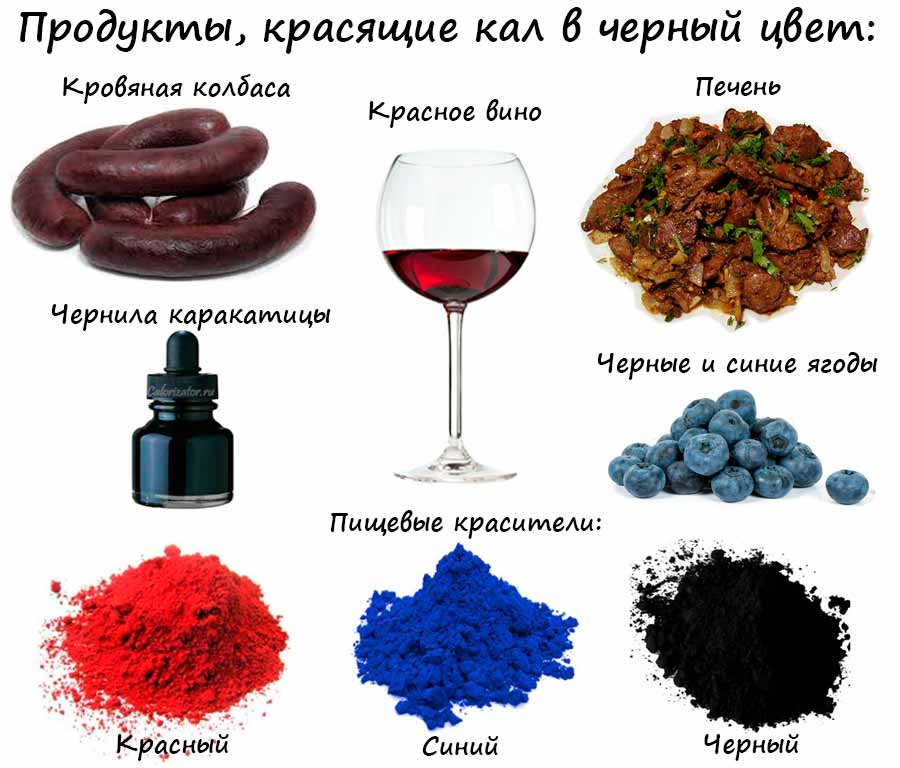 First ask yourself if you’ve had red foods lately.
First ask yourself if you’ve had red foods lately.
Is your diet causing red or reddish poop?
Several foods can change the color of your stool to a pink or reddish color:
- Beets
- Tomato soup
- Gelatin dessert
- Red drinks
Other causes of red or reddish poop
If you don’t think your diet is the cause, the red you see may be blood. And if it’s bright red, the blood likely comes from the lower part of your digestive tract. Common causes include:
- Noncancerous tumors
- Cancer
- Inflammation in the colon, called colitis
- Growths called polyps in your colon
- Conditions caused by small sacs in the wall of the colon, called diverticular disease
- Hemorrhoids
Call your doctor if you see red that’s probably not from food you ate.
Poop can often come out the color of the food that went in, especially if you have diarrhea. If your poop has an orange hue, it’s most likely due to some orange foods.
Is your diet causing orange poop?
Foods that have beta-carotene can turn your poop orange, such as:
- Carrots
- Winter squash
- Pumpkin
- Sweet potatoes
Foods with orange coloring, such as sodas, candy, or gelatin dessert, can also give your poop an orange color.
Also, antibiotics and antacids that have aluminum hydroxide in them can make your stool orange.
Other causes of orange poop
Rarely, poop can be orange if you have a problem with your liver that causes it to make less bile than normal, or a blockage that keeps bile from leaving the liver and entering your system. But usually, if this is the case, your poop will be pale or clay-colored.
Most of the time, poop that’s a different color from what you’re used to isn’t something to worry about. It’s rare for it to be a sign of a serious condition in your digestive system. But if it’s white, bright red, or black, and you don’t think it’s from something you ate, call your doctor.
Top Picks
What Do Different Poop Colors Mean?
Written by Hope Cristol
- What Do Different Stool Colors Mean?
- Normal Poop Color
- Green Poop
- Yellow Poop
- White, Pale, or Clay-Colored Poop
- Black Poop
- Red or Reddish Poop
- Orange Poop
- When to Get Help for Poop Color Changes
- More
Different stool colors can mean different things, mostly depending on what you’ve eaten.
You’d probably notice if your poop is a different hue than normal. But what does it mean if it’s green? What about red, yellow, white, or black? Or orange?
Most of the time, minor changes in the color of your waste are due to diet. After all, we don’t eat the same thing at every meal, every day. But sometimes a color change can signal a minor health issue. In rare cases, it means something serious is wrong in your digestive system.
If the color you see before you flush worries you, call your doctor.
Poop is normally brown. The color is the result of what you eat and how much bile is in your stool.
Bile is a fluid your liver makes to digest fats. It starts out as a yellowish green color. But as the pigments that give bile its color travel through your digestive system, they go through chemical changes and turn brown.
Your poop can sometimes have a slightly greenish hue, or even be a more vivid green. Most of the time, green or greenish poop is normal.
Is your diet causing green poop?
Think back on what you’ve been eating. These foods and supplements can cause your poop to be green:
- Green veggies, like spinach or kale
- Green food coloring, such as in drink mixes or ice pops
- Iron supplements
Other causes of green poop
If you have green diarrhea, the color of your food may not be to blame. It’s likely that your meal moved through your gut too quickly, so the fat-digesting bile didn’t have time to turn brown.
There may be times when your poop looks more yellow than brown.
This shade is also normal for many people. It’s common for babies, especially those who breastfeed. But if you have yellow poop that looks greasy and smells very bad, it may have too much fat. That could be a sign your body isn’t digesting food properly.
Is your diet causing yellow poop?
Indirectly, your diet could cause yellow poop. If you have celiac disease, your body can’t handle a protein called gluten, which is in wheat, barley, and rye. If you have the condition and eat foods that have gluten, like many breads, pastas, and cookies, your intestines won’t work as they should. So, if you’re eating those foods, and your poop is yellow, it may be time to see a doctor.
If you have the condition and eat foods that have gluten, like many breads, pastas, and cookies, your intestines won’t work as they should. So, if you’re eating those foods, and your poop is yellow, it may be time to see a doctor.
Other causes of yellow poop
There may be other causes of yellow poop that’s greasy and smelly. If it happens to you often, tell your doctor.
Sometimes, poop may not have much color at all.
Is your diet causing pale poop?
If your poop is pale, it’s not likely directly due to a food. But medicines for diarrhea like bismuth subsalicylate (Kaopectate, Pepto-Bismol) can sometimes cause pale or clay-colored poop. So can barium, a chalky liquid you drink before you get X-rays of the upper part of your digestive tract.
Other causes of pale poop
A more serious cause is a lack of bile in your stool. (Remember, bile gives poop its brown color.) Your body makes bile in the liver, stores it in the gallbladder, and releases it into your small intestine to help digest your food. If there’s not enough of it to give your poop its typical brown color, it could be a sign of a problem along the way.
If there’s not enough of it to give your poop its typical brown color, it could be a sign of a problem along the way.
Liver disease, such as hepatitis, can keep bile from getting into your body waste. So can a blockage in the tubes (called ducts) that carry bile. This can happen because of:
- Gallstones
- A tumor
- A condition you’re born with called biliary atresia
Babies’ poop is black for the first few days after they’re born. Otherwise, it may be because you ate something very dark-colored or took a medicine or supplement that causes black poop. But this color can be a sign of a more serious problem: bleeding in the upper part of your digestive tract.
Is your diet causing black poop?
Foods and supplements that turn poop black include:
- Black licorice
- Blueberries
- Iron supplements
Medicines that have bismuth subsalicylate (Kaopectate, Pepto-Bismol) can also cause very dark stools.
Other causes of black poop
Poop that looks like tar is often a sign of bleeding in the digestive tract. Some causes include:
- Bleeding from stomach ulcers
- Bleeding sores in your esophagus from acid reflux
- Bleeding from noncancerous tumors in the upper GI tract
- Cancer
If you don’t think black poop came from what you ate, you need to talk to your doctor.
If you see red or reddish poop in the toilet, don’t be alarmed right away. First ask yourself if you’ve had red foods lately.
Is your diet causing red or reddish poop?
Several foods can change the color of your stool to a pink or reddish color:
- Beets
- Tomato soup
- Gelatin dessert
- Red drinks
Other causes of red or reddish poop
If you don’t think your diet is the cause, the red you see may be blood. And if it’s bright red, the blood likely comes from the lower part of your digestive tract.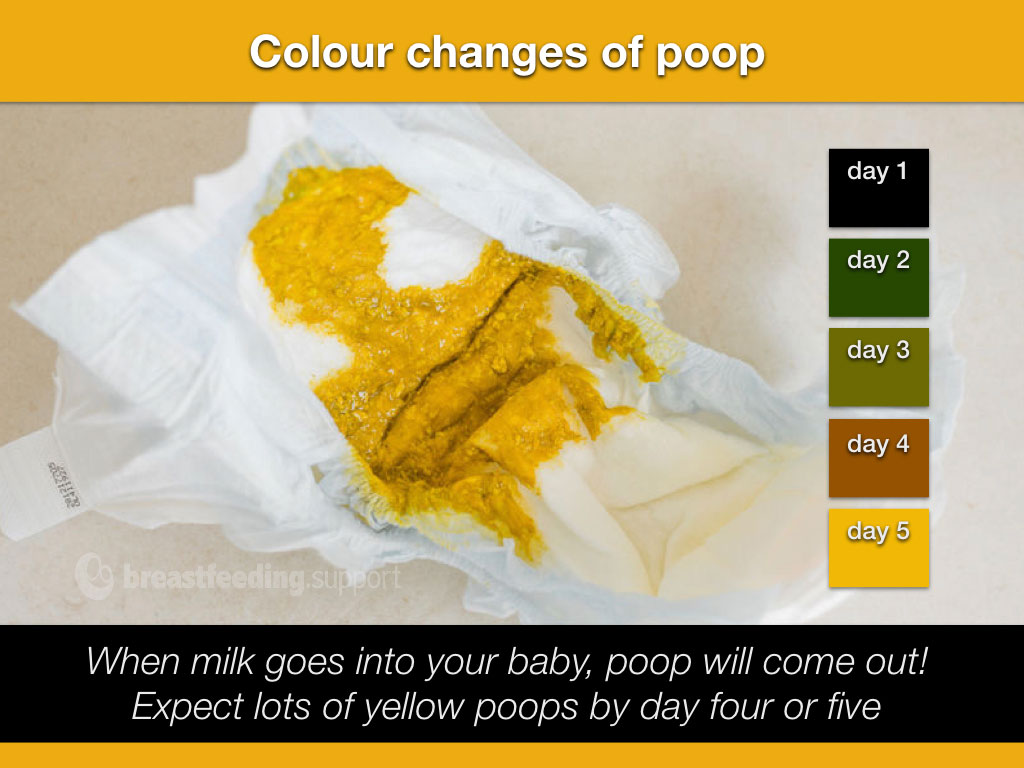 Common causes include:
Common causes include:
- Noncancerous tumors
- Cancer
- Inflammation in the colon, called colitis
- Growths called polyps in your colon
- Conditions caused by small sacs in the wall of the colon, called diverticular disease
- Hemorrhoids
Call your doctor if you see red that’s probably not from food you ate.
Poop can often come out the color of the food that went in, especially if you have diarrhea. If your poop has an orange hue, it’s most likely due to some orange foods.
Is your diet causing orange poop?
Foods that have beta-carotene can turn your poop orange, such as:
- Carrots
- Winter squash
- Pumpkin
- Sweet potatoes
Foods with orange coloring, such as sodas, candy, or gelatin dessert, can also give your poop an orange color.
Also, antibiotics and antacids that have aluminum hydroxide in them can make your stool orange.
Other causes of orange poop
Rarely, poop can be orange if you have a problem with your liver that causes it to make less bile than normal, or a blockage that keeps bile from leaving the liver and entering your system. But usually, if this is the case, your poop will be pale or clay-colored.
But usually, if this is the case, your poop will be pale or clay-colored.
Most of the time, poop that’s a different color from what you’re used to isn’t something to worry about. It’s rare for it to be a sign of a serious condition in your digestive system. But if it’s white, bright red, or black, and you don’t think it’s from something you ate, call your doctor.
Top Picks
Green feces in an adult and a child
Feces: what is it
Feces (stool, feces) is the end product of digestion, which is formed in the gastrointestinal tract and excreted from the body during defecation. In fact, this is a waste material from which all substances useful for the body are squeezed out.
In fact, this is a waste material from which all substances useful for the body are squeezed out.
Fecal components:
- water: makes up up to 75% of faeces. Its main task is to dissolve toxic substances and soften the feces so that it moves freely through the intestines;
- solids: undigested plant and muscle fibers, fats, toxins, and beneficial bacteria that help break down food.
Basic properties of feces: quantity, texture, shape, color and smell. Changes in these parameters can be signs of various diseases.
The normal consistency of the feces is dense, the shape is cylindrical, the thickness is 2-4 cm. It is this feces that is called formed. The normal color of feces is brown, which can vary from light to dark shades depending on eating habits.
The color of feces can change for many reasons – from the use of coloring foods to diseases of the gastrointestinal tract, liver pathologies, intestinal infections, bleeding in the gastrointestinal tract.
Physiological causes of green stool
Normally, green stools may appear after eating certain foods and taking certain medications.
Products that color stool green
Foods that contain chlorophyll, a green pigment needed by plants for photosynthesis, can color feces green.
Foods rich in chlorophyll:
- parsley,
- celery,
- leeks,
- dill,
- broccoli,
- spinach,
- collard greens,
- green asparagus beans,
- arugula,
- watercress,
- zucchini,
- cucumbers.
Green vegetables contain chlorophyll, which can color stools
If such foods appear in the diet, then the feces may acquire a green color. At the same time, the frequency of defecation does not change, the stool is formed and does not have a putrid odor. As a rule, after a couple of days, the color of the feces returns to normal.
Also, green stool occurs after eating sweets, marmalade, jelly and other products dyed with chemical dyes.
Medicines
Drugs that contain iron can change the color of feces to green and are often prescribed to treat iron deficiency anemia.
Iron is excreted in the stool and may give feces a green color. The symptom persists during treatment, then gradually disappears.
Pathological causes of green stool
Green feces may indicate pathologies of the gastrointestinal tract, diseases of the liver and gallbladder, intestinal infections, food poisoning.
Pathologies of the liver and gallbladder
If the color of the feces turned green, and dull pains and heaviness appeared in the right hypochondrium, the work of the liver and gallbladder may have been disturbed.
Diseases of the liver and gallbladder, in which feces can turn green:
- viral hepatitis — an infectious and inflammatory disease of the liver caused by hepatitis viruses;
- biliary dyskinesia – disruption of the walls of the gallbladder and bile ducts;
- gallbladder dysfunction – a violation of emptying and filling, in which the outflow of bile from the organ is difficult;
- postcholecystectomy syndrome is a complex of symptoms that can develop after removal of the gallbladder.

As a rule, during exacerbation of diseases of the liver and gallbladder, the stool turns from green to grayish-white.
Intestinal infections
One of the causes of green stool in children and adults is intestinal infections caused by pathogens. For example, salmonellosis is an infectious disease of the digestive system, which is provoked by bacteria of the genus Salmonella.
Salmonella is a microscopic bacillus covered with long flagella that help it move
You can become infected with salmonellosis if you eat raw or undercooked eggs, meat and dairy products, as well as if you come into contact with infected pets and poultry.
Main symptoms of salmonellosis:
- high temperature;
- headache;
- weakness, aching muscles;
- abdominal pain;
- nausea, frequent vomiting;
- green feces;
- offensive stools, often watery or frothy;
- pale skin;
- plaque on the tongue.

2-3 days after the onset of the first symptoms of salmonellosis, streaks of blood and mucus may be found in the stool. The patient is worried about pain in the abdomen, painful urge to defecate.
Celiac disease
Celiac disease, or celiac disease, is a chronic inflammation of the mucous membrane of the small intestine, which occurs due to intolerance to gluten (a protein found in cereals: rye, barley, wheat).
Celiac disease – gluten intolerance, has a genetic background
Main symptoms of celiac disease:
- diarrhea;
- fetid greenish stools;
- steatorrhea – excess fat in the feces;
- weight loss;
- polyhypovitaminosis is a lack of groups of vitamins in the body.
As a rule, the first symptoms of celiac disease in women appear at the age of 30-40, in men a little later – at 40-50 years.
Green feces in children
Children in the first 2-3 days after birth excrete dark green feces – meconium. This is the norm. Then the feces lighten and acquire a light brown or yellowish tint.
This is the norm. Then the feces lighten and acquire a light brown or yellowish tint.
Children aged 1.5–2 years may also have green stools. This is possible if the child is breastfed and the mother’s diet contains a large amount of foods rich in chlorophyll (parsley, celery, leeks, dill, cucumbers, etc.).
In addition, stools may turn green when changing from one formula to another, when there is an excess of sugar or iron in the formula, when solid foods are introduced into the baby’s diet. In this case, you can adjust the diet and choose the right mixture.
If, after replacing the mixture, the feces still remain green, you need to contact a pediatrician – the reason may be a violation of the baby’s intestinal microflora.
Green feces in children older than 2 years is normal when eating foods containing chlorophyll or chemical dyes.
Pathological causes of green stool in children:
- infectious diseases of the gastrointestinal tract,
- congenital pathologies of the digestive tract.

As a rule, when it comes to pathology, in addition to green stool, the child has other symptoms.
Concomitant symptoms of gastrointestinal pathologies in children:
- temperature increase;
- chills;
- cold sweat;
- nausea and vomiting;
- poor appetite;
- abdominal pain;
- impurities of blood, mucus, pus in the feces;
- bloating;
- rash on body;
- weakness, tearfulness.
To find out the reasons for the ailment, you need to visit a pediatrician. He will carefully listen to the complaints of the child or parents (if the baby cannot yet tell about his state of health), conduct an examination and refer the patient for additional examinations: a complete blood count, a complete urinalysis, a stool test, a swab from the anus.
Complete blood count without leukocyte formula (capillary blood)
Capill. blood (+150 ₽) 21 1 day
21 bonus
210 ₽
Add to cart
1 day
Capill. blood 150 ₽
blood 150 ₽
Urinalysis
Urine 24 1 day
24 bonuses
240 ₽
Add to cart
1 day
Urine 0 ₽
Biochemical analysis of feces
Cal 172 7 days
172 bonuses
1 720 ₽
Add to cart
7 days
Cal 0 ₽
Diagnosis of diseases causing green stools
A single appearance of green stool after eating foods containing chlorophyll or chemical dyes is a normal variant.
If green stool is accompanied by unpleasant symptoms (abdominal pain, nausea, vomiting, fever, signs of intoxication), then we can talk about a serious illness. In this case, you should immediately contact a doctor – a general practitioner or gastroenterologist.
At the appointment, the specialist will interview the patient, clarify whether he is taking any medications, conduct an examination and, if necessary, refer him for additional examinations and tests.
To assess the general condition of a person and identify possible violations of the gastrointestinal tract, basic studies will help – analysis of blood, urine and feces.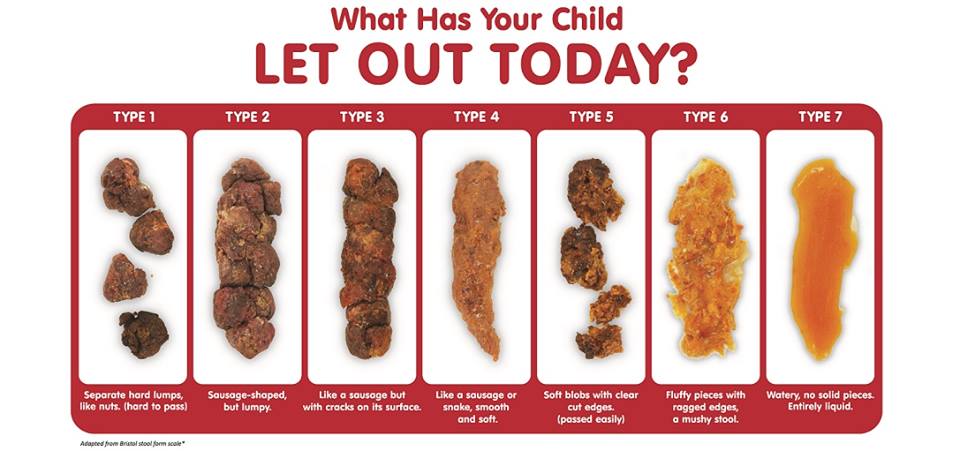
Biochemistry 13 indicators
Ven. blood (+140 ₽) 193 1 day
193 bonuses
1 930 ₽
Add to cart
1 day
Ven. blood 140 ₽
Urinalysis
Urine 24 1 day
24 bonuses
240 ₽
Add to cart
1 day
Urine 0 ₽
Biochemical analysis of feces
Cal 172 7 days
172 bonuses
1 720 ₽
Add to cart
7 days
Kal 0 ₽
If the doctor suspects that the microflora has been disturbed due to pancreatitis (inflammation of the pancreas), hepatitis (inflammation of the liver) or gastritis (inflammation of the gastric mucosa), he can refer the patient to targeted studies that will help identify and eliminate the root cause of the violation of the intestinal microflora.
Pancreas
Taking (2 types, +140 ₽) 105 1 day
105 bonuses
1 050 ₽
Add to cart
1 day
Take (2) +140 ₽
Ven. blood 140 ₽
Cal 0 ₽
Lipase
Ven. blood (+140 ₽) 31 1 day
blood (+140 ₽) 31 1 day
31 bonus
310 ₽
Add to cart
1 day
Ven. blood 140 ₽
Pancreatic amylase
Ven. blood (+140 ₽) 26 1 day
26 bonuses
260 ₽
Add to cart
1 day
Ven. blood 140 ₽
Viral hepatitis B and C: molecular screening
Ven. blood (+140 ₽) 101 3 days
101 bonus
1,010 ₽
Add to cart
Ven. blood 140 ₽
Coprogram
Cal 38 1 day
38 bonuses
380 ₽
Add to cart
1 day
Cal 0 ₽
Intestinal infections can be diagnosed using tests for individual pathogens.
Salmonellosis culture (Salmonella spp.)
Ven. blood (+140 ₽) 68 4 days
68 bonuses
680 ₽
Add to cart
Ven. blood 140 ₽
Sowing for pathogens of the intestinal group (Shigella spp., Salmonella spp.)
Taking (2 types) 67 4 days
67 bonuses
670 ₽
900 04 Add to cart
Take (2) +0 ₽
Swab 0 ₽
Cal 0 ₽
If celiac disease is suspected, the doctor will refer the patient to tests that will help identify a hereditary disease and adjust the diet so as to avoid unpleasant manifestations of the disease.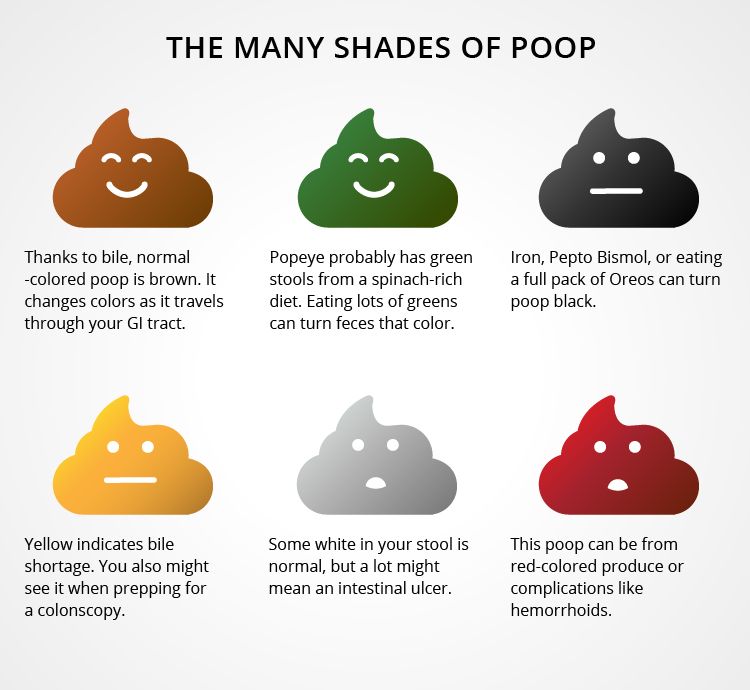
Celiac disease
Ven. blood (+140 ₽) 446 14 days
446 bonuses
4 460 ₽
Add to cart
14 days
Ven. blood 140 ₽
Celiac disease: advanced screening
Ven. blood (+140 ₽) 332 14 days
332 bonuses
3 320 ₽
Add to cart
14 days
Ven. blood 140 ₽
Treatment of diseases causing green stool
Treatment will depend on the cause of the pathology. Thus, in case of infections, therapy will be aimed at destroying pathogenic bacteria or viruses, in case of gastritis, it will be aimed at restoring the gastric mucosa.
An important component of the treatment of diseases that can cause green stool is a special diet. In the acute period, the patient is transferred to a sparing diet – pureed cereals on water, mucous soups. After recovery, the patient can gradually return to their usual diet.
A gluten-free diet is indicated for celiac disease.
Medicines used to treat diseases that cause green stool:
- sorbents help to remove toxins and bacterial agents from the body;
- antibiotics – may be indicated for severe bacterial infections.

Sources
- Ivashkin V. T. Gastroenterology. National leadership. 2018.
- Infectious diseases. National leadership / ed. N. D. Yushchuk, Yu. V. Vengerova. 2018.
- Khavkin A.I. Intestinal microecology disorders. Correction principles. 2004.
Is it possible to determine intestinal disease by feces?
During an appointment with a gastroenterologist, many patients avert their eyes to the question: “How long have you been paying attention to the result of the work of the gastrointestinal tract?” It’s not embarrassing!
In our opinion it is much sadder if you have never looked at your feces. Such observations are a very important method of self-diagnosis and diagnostics in general. It is periodic observation that is dominant, and not one single look at the stool in the morning before a visit to the doctor.
A change in stool parameters is one of the main symptoms of most diseases of the intestines and the gastrointestinal tract in general.:max_bytes(150000):strip_icc()/healthy-and-unhealthy-stool-89211-color-V1-9cef9502a0a5433994307575289f34c7.png)
Items to look out for in a stool self-diagnosis :
- frequency per day and per week;
- consistency and volume;
- change in the frequency and consistency of the stool, in comparison with how it was before, when peace and tranquility reigned in the abdomen;
- impurities in the stool and its color;
- cases of unsuccessful or excessive urge to empty the bowels;
- lack of urge to defecate or sensation of incomplete emptying of the bowels.
One should not look for a problem where there is none, and certainly one should not close one’s eyes to disturbing symptoms. To determine what is the norm, it is important to understand that each organism is individual!
Normal stool characteristics
- Frequency – usually 1-2 times a day, 3 to 7 times a week.
- Stool consistency, for quick orientation of the patient and the doctor in it, the Bristol scale, which was published back in 1997, is used.
 Let’s get to know her better. Depending on the diet, the amount of fiber, water, stools can normally vary from type 3 to type 5.
Let’s get to know her better. Depending on the diet, the amount of fiber, water, stools can normally vary from type 3 to type 5. - The stability of the stool is perhaps the most difficult to explain: there should be no sudden changes in consistency, stool frequency during the week, +/- one type on the Bristol scale. Also important is the subjective sensation before, during and after the act of defecation. Here is a place for satisfaction and quiet joy, I’m quite serious!
- The color of the stool can be varied, it depends on the diet. Brown of different shades is considered optimal. We make an amendment for the color of food: a lot of dairy products in the diet – the stool will be lighter. It’s darker if you ate a dish with nori, a black burger. In addition, it is worth thinking about drugs or dietary supplements that you can take – bismuth and iron preparations give dark, closer to green stools.
Warning signs not to be ignored
- Smaller stools (less than 1 every 2 days or 3 times a week) or frequent stools (more than 2, rarely 3 times a day).

- Changes in shape and consistency. We will continue to get acquainted with the Bristol scale, not the norm in it: fragmented, “sheep” or dense, type 1-2 feces and, in contrast to it, mushy or watery stools, stools in separate flakes – type 6-7.
- Unstable stools – alternation of its consistency and frequency without any regularity, then 1 time per day, then 5, then type 3 on the Bristol scale, then 6. It is also important to notice what sensations accompanied the alternation of stool (good / bad).
- Color change. Pay attention to very light, closer to gray stools or very dark, black stools. Often yellow stools are also a sign of abnormality.
- The appearance of impurities in the feces is perhaps the most formidable, but clear symptom:
🔸Blood. It can be scarlet, dark, it can be changed black. It can be in scarce amounts, only on a piece of paper or on the surface of the stool, it can be mixed with feces. It may drip or stand out excessively, but here you yourself will call an ambulance team without much thought.

There are many diseases, an alarming symptom, however, one should not be afraid of examination, it is better than reaping the fruits of inaction.
🔸 Slime. Often we are faced with a misunderstanding of this term. I would describe it as follows: a clear viscous liquid, resembling saliva, can be mixed with the stool, can be separated on its own. May be released as foam.
🔸Yellow-green impurities in the stool can be a sign of the presence of pus, which means inflammation, or accelerated progression of bile through the gastrointestinal tract.
🔸Undigested pieces of food – the result of an accelerated work of the gastrointestinal tract and incomplete processing of the food product, pay attention to their composition (meat / vegetables), especially alarming if you see food consumed during the day.
- Ineffective or excessive urge to stool, as well as the absence of an urge to stool, may not be the norm, pay attention to this.
Consult a gastroenterologist in case of abnormalities.
Fecal tests for diagnosing bowel diseases
Tracking stool parameters is a simple and effective method that can be used for preliminary diagnosis. If deviations from the norm have appeared, in addition to consulting a gastroenterologist, stool tests will be required to help establish the cause of these deviations. Fecal analyzes are powerful non-invasive diagnostic tools.
Coprogram or general fecal analysis is the most famous, proven analysis. It examines the components of the processing of all foods (proteins, fats, carbohydrates), mucus, visible blood, inflammatory cells, sometimes even protozoan cysts or helminth eggs can be identified and described.
Fecal occult blood is a more accurate method for detecting blood in the stool, including altered blood, from the upper GI tract, in minimal amounts.
Fecal calprotectin – assay to detect inflammation in the intestine. It is especially interesting as a screening in older people in conjunction with feces for occult blood.
Eosinophilic neurotoxin is an indicator of an allergic reaction in the gastrointestinal tract.
Pancreatic elastase is useful for patients with chronic pancreatitis to determine the degree of production of enzymes by the pancreas.
Stool culture for dysbacteriosis to detect deviations in the composition of the microflora, the growth of pathogenic and opportunistic flora.
Also do not lose their relevance stool tests for helminths and protozoa . There are many of them, starting from microscopic examination by the Parasep enrichment method, up to high-precision PCR reactions separately for each type of pathogen or a panel of the most common ones.
For the interpretation of the tests, I recommend that you consult a doctor.
How to take a stool test?
Proper preparation and collection of stool samples will ensure the correct result. All stool tests must be taken in a special container on the day of collection; the collected samples should be stored in the refrigerator for no more than 6-8 hours. The collection of stool samples is carried out in a natural way, without the use of enemas and laxatives, urine should not get into the tests. The container must be filled 1/3. Some stool tests require special preparation before taking them.
The collection of stool samples is carried out in a natural way, without the use of enemas and laxatives, urine should not get into the tests. The container must be filled 1/3. Some stool tests require special preparation before taking them.
To prepare for a coprogram, skip a week or more after taking antibiotics. Before analysis, do not take laxatives, enzymes, sorbents, do not use rectal suppositories and ointments.
Before testing for occult bleeding of the gastrointestinal tract, a 4-5-day diet is recommended with the exception of meat, offal (liver, heart), fish, as well as iron, magnesium and bismuth preparations. However, when testing stool for occult blood using the Colonview method, only restriction of the above drugs is recommended.
A special container is used for tests for helminth eggs, cysts and vegetative forms of protozoa, as well as for inoculation for intestinal dysbacteriosis.
At GC Expert you can get a consultation with a gastroenterologist specializing in the diagnosis and treatment of intestinal diseases, pass all the above tests or undergo a comprehensive diagnosis under the “Check-up intestines” program in two days.




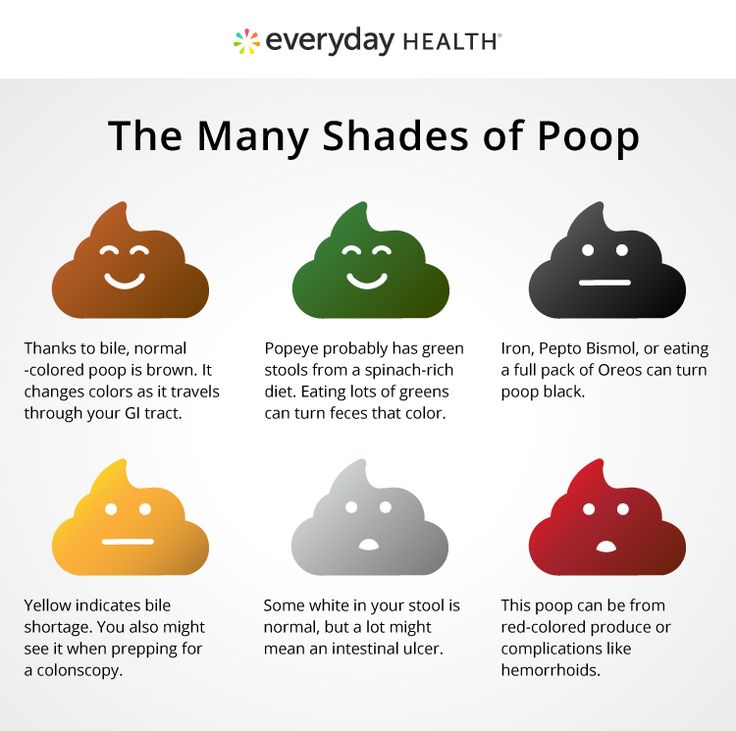
 Let’s get to know her better. Depending on the diet, the amount of fiber, water, stools can normally vary from type 3 to type 5.
Let’s get to know her better. Depending on the diet, the amount of fiber, water, stools can normally vary from type 3 to type 5.
